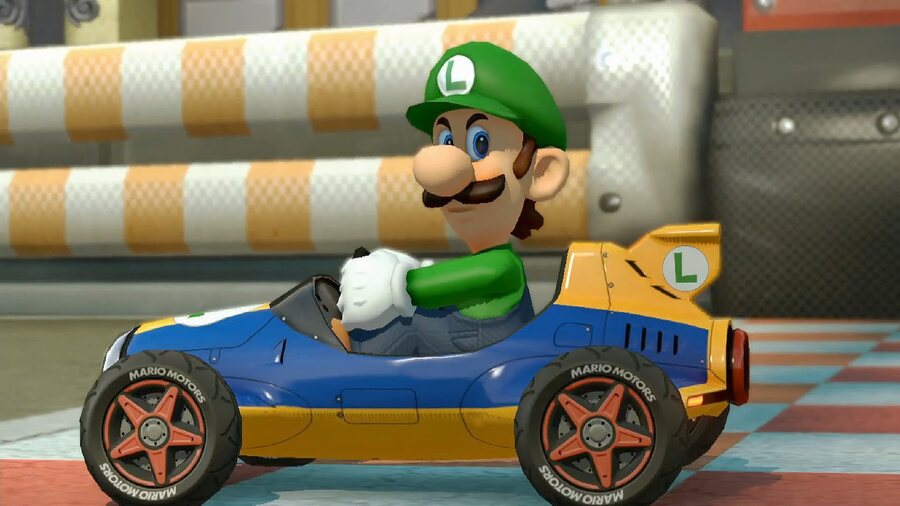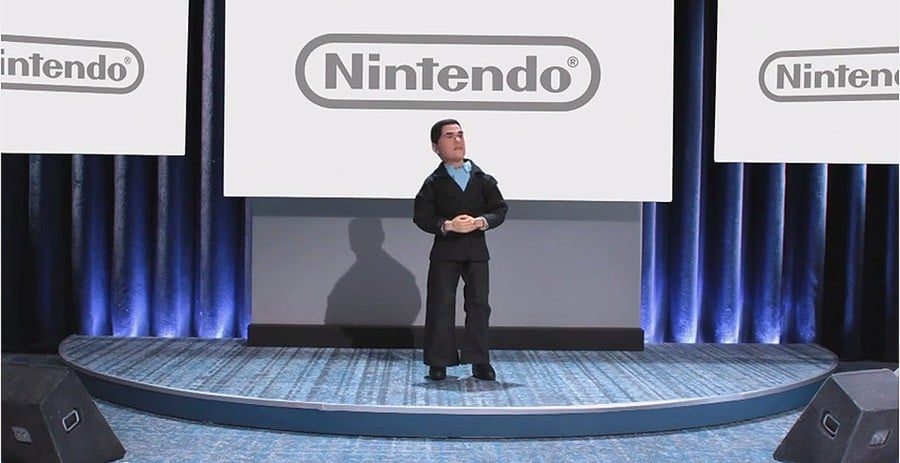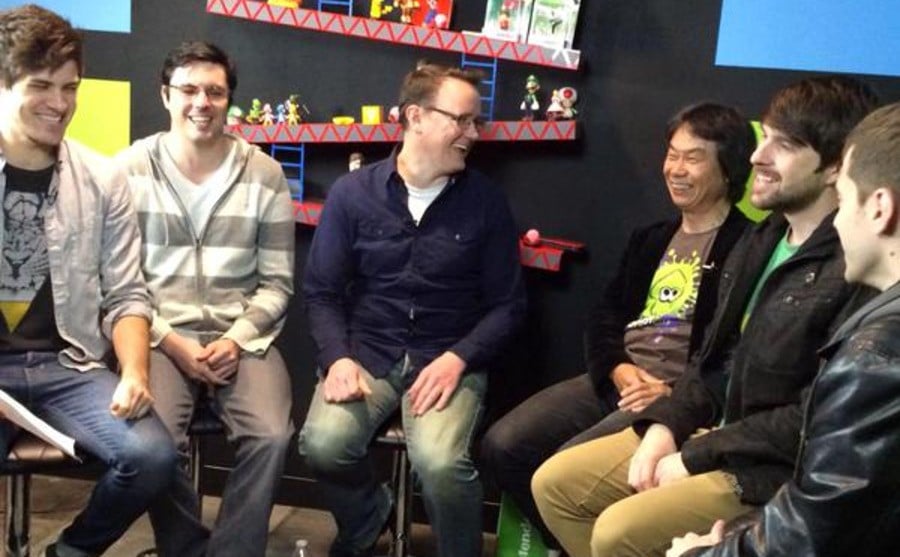
An accusation occasionally hurled at Nintendo is that it's slow or behind the times in social media, and failing to do enough on platforms such as YouTube and Twitch. It would have been a valid point in past years, certainly, but it looks increasingly wrong with each passing year; 2014 brought some major improvements from the big N. Nintendo is still behind in some areas, absolutely, but various efforts in the last 12 months not only showed the company embracing the power of social media and video, but in some respects leading the way.
Looking back briefly on the years preceding 2014, Nintendo did already show an increasing willingness to relate to and communicate with online audiences. Nintendo Direct is testament to this, as the company took advantage of the fact that it develops or publishes the majority of its system's biggest games (itself arguably a disadvantage) to manage how it builds hype. Bypassing the typical route to a game announcements, bringing reveals and details 'directly' to fans has proven to be a sure-fire way to generate huge online buzz and attention. Sony and Microsoft have surprisingly not adopted the same approach, yet they're in trickier situations due to so many of the hottest games on their platforms being third-party, so companies like Activision, EA and Ubisoft have their own marketing strategies.
Despite the growth and success of Nintendo Direct, the company was slow in other areas, however. As recently as mid-2013 it received all the wrong kinds of press for imposing ad-revenue requirements on YouTube content. Was Nintendo legally entitled to do this? Absolutely. Was it a smart move? No. It backfired and Nintendo stepped back, also notably not being able to confirm fast enough that it wasn't involved in similar claim issues later that same year. While Nintendo was entitled to claim these revenues, it was short-sighted and old-fashioned. It was sacrificing the good will of power-brokers on YouTube for ad revenue, but in the process driving them away - if you have millions of subscribers, why cover Nintendo content and lose revenue when you can cover other games and pocket the ad money? It was a bad call that took time to retrieve.

To close out 2014 we listed five New Year's Resolutions for Nintendo, with the first point being "Build the Brand on Social Platforms". Twitter and Facebook were mentioned in passing, but we were really focusing on video with YouTube and - to a degree - Twitch. It may seem odd for someone writing an editorial on a website to emphasize this point, but YouTube in particular is hugely powerful in modern media and marketing. There are PC indie devs, in particular, that see sales spikes at crazy levels if a prominent YouTuber posts a video praising their game - or even criticising it. It's become such a powerful force that accusations often thrown at the traditional media of being 'bought' are becoming a topic on YouTube, especially if sponsored and paid-for content isn't clearly marked as such.
We certainly don't want Nintendo to get caught in grubby practices of questionable video promotion, which caught Microsoft out late last year, but it certainly needs to get back into the picture with the YouTube generation. There are plenty that likely spend more time watching YouTube videos than watching TV, making millionaires out of the platform's celebrities. For Nintendo, it's been scrabbling around and far too absent from some of the biggest channels out there - Minecraft is dominant, for one, but so much of YouTube's gaming content is focused on PC gaming, multi-platform blockbusters and more; Wii U in particular misses most of these areas, and it's out of the loop.
The Nintendo brand is still powerful, despite this, but the company's clearly realised that it needs to ensure it doesn't become a name of gaming's past at the expense of the present. In 2014 Nintendo had a fantastic E3, as it showed more awareness than its rivals - we'd argue - of what social media and online video demands. The Digital Event was mostly snappy and entertaining, the Super Smash Bros. Invitational tapped into eSports trends, and the rolling Nintendo Treehouse stream on Twitch and YouTube perhaps helped fans actually gain and learn more from watching online than those at the actual show. Throughout the rest of the year Nintendo ran more live stream events of tournaments, and even prompted an online meltdown at the start of one broadcast when it announced the Super Smash Bros. for Nintendo 3DS demo. We should also mention the YouTube uploading options in Mario Kart 8, while Luigi's death stare provided priceless coverage that money can't necessarily buy.

Much of this Nintendo activity, excellent as it is, does have the side-effect of preaching to the converted. That's important, as its loyal fans of the company that have done much to sustain it in this tough generation, but winning over neutrals - those that embraced Wii and DS or are newer yet to Nintendo - is a priority. While we don't really know full details of what's happening with the so called "affiliate programme" for YouTube, recent weeks have brought us high profile videos in which Shigeru Miyamoto and Bill Trinen visited three prominent YouTube channels, each with different target demographics.
Below are the subscription numbers, publication dates and views so far (at the time of writing) from these appearances.
- Smosh Games (5.5 million subscribers) - posted 5th January (this year) and already has over 266,000 views
- iJustine (2.1 million subscribers) - posted 17th December and has over 223,000 views
- Rosanna Pansino (nearly 3.1 million subscribers) - posted 16th December with over 900,000 views
These are important beginnings, and the Smosh Games video was preceded with confirmation of a new weekly show dedicated to Super Smash Bros. It's possible that a number of you watching these videos were, like this writer, more interested in snippets of information that Shigeru Miyamoto let slip, but the priorities and focus of these channel's core audiences will have been different. Each channel has it own distinctive viewership, and it's these unconverted consumers that Nintendo is clearly targeting; it's doing so with its best known and most respected development figurehead.

When you combine these sorts of appearances with Nintendo's own efforts, and prominent roles at events such as December's Video Game Awards, there's an increasing sense that it's embracing the sizeable online audience that'd perhaps sooner watch videos of FIFA than Mario. While not a guarantee to win over those that'd prefer to play Call of Duty in 1080p, reaching out to diverse audiences and gamers of all types is vital for brand recognition; not only is it important for this 3DS and Wii U generation, but also for future hardware. The battlegrounds are continually shifting in marketing, and video services such as YouTube and Twitch cannot be ignored. Millions enjoy videos every day, and Nintendo needs to be involved.
Much credit should go to Nintendo for its efforts in 2014; it went its own way and came out well at E3, and it gave fans more chances than ever to watch official live streams and footage online. This mini-tour by Bill Trinen and Shigeru Miyamoto at the end of 2014 was also vital, as Nintendo gets some focus on hugely popular channels. The momentum will hopefully be kept up in 2015; the more popular vloggers and channels cover and enjoy Nintendo games the better, while more content to satisfy the most dedicated fans - such as those reading this page - will also be hugely welcome.
There's always room for improvement, but Nintendo is showing that it's ready to spread its message far and wide - more gamers seeing what it has to offer will bring improved chances of Nintendo returning to rule the roost in years to come.
Let us know what you think of Nintendo's efforts in online video in 2014, and what you hope it'll do throughout 2015.



Comments 29
@Superstick Even though I'm really not a fan of the guy's videos (boggles me how many subscribers he has), that might actually do wonders for Nintendo's publicity.
Any online publicity like this is good and I'm all for Nintendo finally embracing how powerful internet buzz can be.
Maybe if I can become a popular youtuber, I could get Nintendo & Co. to visit me... oh, that would be fantastic.
Hey! Why haven't they come to me yet?! I live in Scotland, I'm below 100 subs, I tick all the boxes man!
Most of this stuff was started by nintendo of japan. They seem to alway be 5 years behind in the times. I glad that they listen to fans and the youtubers that started backing off on nintendo games.
And once again another example of Nintendo making good choices, well after making bad ones to the point where the good choices just barely got them out of the hole the bad ones put them in.
They still gotta clear up the whole youtube monetization thing they were coming up with which I think we've heard nothing about
Of course Nintendo will go for Youtube and Twitch. Sorry but Nintendo are stingy gits. When was the last time you seen a Wii U ad on TV? Microsoft and Sony ads are all the time. Nintendo of course make money too from the Youtube videos.
Youtube celebrities.. oof
@WaveyChristmas Playing Super Mario Bros 2 (J).
I just did a let's play of SM3DW and Youtube slapped ads on all of my videos. Pretty lame. I'm interested to hear more about the affiliate program.
Now if only they would appear on channels I care about...
Well VGA the Let's Players that I watch do the occasional Nintendo titles but don't do it too often because they can't make a profit off their commentary (that is their livelihood). It really does cause YouTubers to just raise their nose to Nintendo when they could be getting more of them to actually play some Nintendo games. Hell Nintendo even claimed a parody because it used a clip of the original Super Mario Bros music, you can't do that, that is unacceptable.
The big question, IS IT WORKING?
Would it not be a better choice to hit the TV channels like Sony and MS whose consoles are either treble (XBOX) or quadruple (PS4) the Wii U sales last month? Could be by a lot more when all is added up.
To answer my own question, I don't think so.
I don't think splashing money on TV ads is really going to do much for the Wii U. It's an image thing. Far more people want to play the games on the other consoles than play a game with Mario in it... again.
Nintendo are not that stupid, they know the Wii U is a disaster - although they will never admit to it, what company would?
So in a nutshell, I think they are doing the right thing. Hang in there, let the 3DS be the bread basket for the next couple or so years and see the generation out as far as they can.
YouTube renders dedicated websites like Gamespot redundant, and now those sites are trying to be more personality-driven to compete. Also, there's been so many journalists leaving these major websites and doing solo YouTube/ indie stuff. Smart, forward thinking move by Nintendo.
Nintendo shouldn't simply have some minor appearances on certain channels. Invite the YouTubers to your place, let them film some stuff, interview some folks, and maybe (just maaaaaaybe) let them test your latest in-development games.
Nintendo doesn't need to suck up to YouTube, but open up to genuine fans!
@Superstick Because of the tasteless nonsense he blurts out non-stop.
@Superstick you mean PewDie-guy who's screams at the camera while playing video games and gets paid four million dollars a year?
I'd rather swallow a chair.
Nintendo tried to stop youtube videos but have now seen the worth in them. It would be good if they also put some effort into promoting the Wii U on TV though.
If Nintendo gives the option to buy eshop games on PC and being able to stream it to 3DS/Wii U and having an account for a user that shows his activity log and personal info without that being in a system exclusive only, that is good enough for Nintendo to get into the modern times.
I don't watch Let's Plays on a regular basis but if I'm curious about a game but I can't download a demo, watching a Let's Play is the next best thing IMHO to get a feel for how the game operates and seeing if its worth a shot. I LOVE Mario Kart but seeing all those Luigi Death Stare videos confirmed that I needed to get the game and system. Nintendo REALLY needs to relax their policy on YouTube and sit back and collect the ad revenue.
YOU SEEEEEEEEEEEEEEE MEEEEEEEEEEEEEE ROLLLIN!
WEEEEEEEEEEEEEGEEEEEEEEEEEEEEEEE
They see me rollin, they hattin, they're all rollin their eyes because I'm the green Luigi.
I have to say, it's wise of Nintendo to be on YouTube in this form. If you asked me this time last year if Ninty did advertisement on YouTube channels I'd say it's a stupid idea, but as of Feb last year I invested in a smart tv, now all I watch is youtbe channels, Netflix, show box and my basic Irish channels. No need for full tv in my place and I see more 'advertisement' for WiiU on YouTube than I ever did on tv.
I might be slow to the YouTube movement in my 30s but it's genius. Some very talented people on there doing amazing shows. It's the future! Sounds naff but it is. Bet Sony and MS start to do the same thing this year.
I wish the headline indicated David Wise had been permanently hired by Nintendo, and that Nintendo had him "Embrace The Vital YouTube Audience".
I have had my own YouTube Nintendo channel for about 5 years and I was never given grief by Nintendo in regards to copyright issues. Perhaps on account that is has less than 200 subscribers, LOL!
I post Nintendo stuff regardless, i never complained about such things on my channel. Though all i ever hear about are the bigger channels like no one else matters. Its getting quite old i might add.
This isn't a Talking Point, it's a undeniable fact.
YouTube, Netfilx, Amazon Instant Video, and other streaming services are going to replace TV within the next 20 years.
Talking Point: Nintendo's Wise to Embrace The Vital YouTube Audience
You say this like Nintendo isn't one of the most iron grim on their IP anti Let's Play video game companies out there. They are still not okay with people making money off of youtube videos of Nintendo games when nearly everybody else is.
Tap here to load 29 comments
Leave A Comment
Hold on there, you need to login to post a comment...